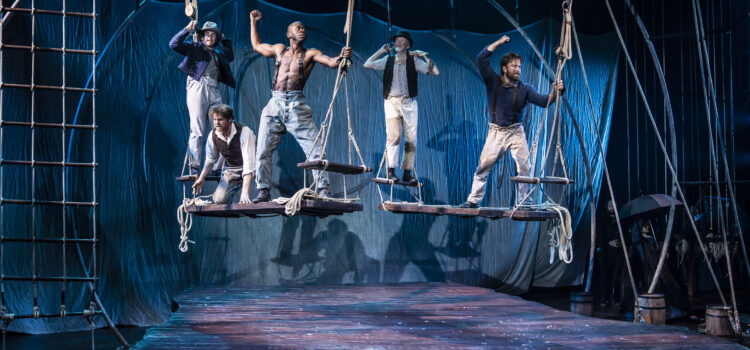By Lynn Venhaus
Mesmerizingly crafted, “Moby Dick” is an astonishing triumph of sound and fury.
Through its hybrid expressionist storytelling involving aerials, acrobatics, dance, visual artistry and dramatic encounters, the aesthetically innovative staging is extraordinary.
This brilliant vision by director David Catlin, who adapted the 1851 novel by Herman Melville, has been executed fluidly with bold intentions. He has stripped an unwieldy story down to essentials — although it still takes 3 hours with 2 intermissions to tell this three act masterpiece.
Catlin immerses us as green hands on the Pequod whaling ship – you will feel as if you are on the voyage on the treacherous high seas around the world.
Perhaps comparable to a Cirque du Soleil experience, it is unlikely that you have seen anything like it, unless you were privy to its landmark 2015 debut at the Lookingglass Theatre Company in Chicago, where it was developed and mounted.
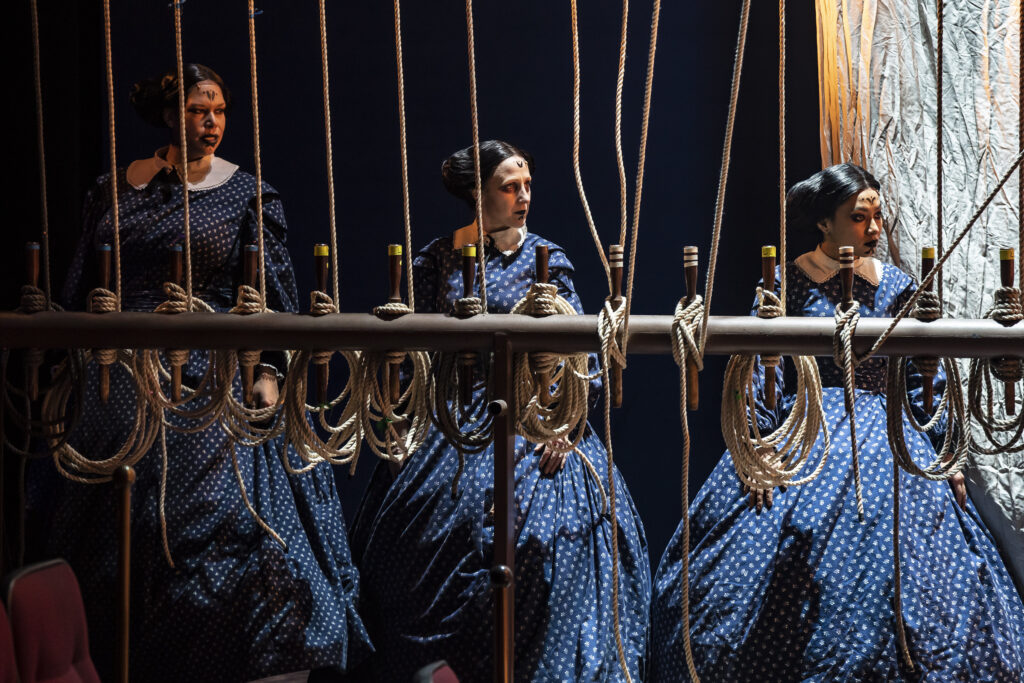
Catlin, a longtime ensemble member, is not the only one involved in The Rep’s stunning and at times, jaw-dropping, production. An outstanding Christopher Donahue, who originated the role of Captain Ahab there, returns as the maritime officer obsessed with revenge against the great white sperm whale who bit his leg off.
A sparse high concept set designed by Courtney O’Neill, aided by assistant designer Catalina Nino, yields to an epic sea adventure that at its core is a battle between fate and free will, as Ahab goes mad in his maniacal quest while his first mate Starbuck believes that our choices fulfill our destiny.
This isn’t your English class study guide, rather a living work of art, composed stylistically with dynamic imagery and movement that creates an unrivaled seafaring adventure.
The now iconic Ishmael is the first sailor we encounter, a philosophical narrator who has worked on a merchant vessel. This time, he signs up for the Pequod, leaving Nantucket. This sea hunt is for whale oil and the byproducts used in the 19th century – the appeal of a comfortable lifestyle was at odds with the messy and grimy business of whale hunting.
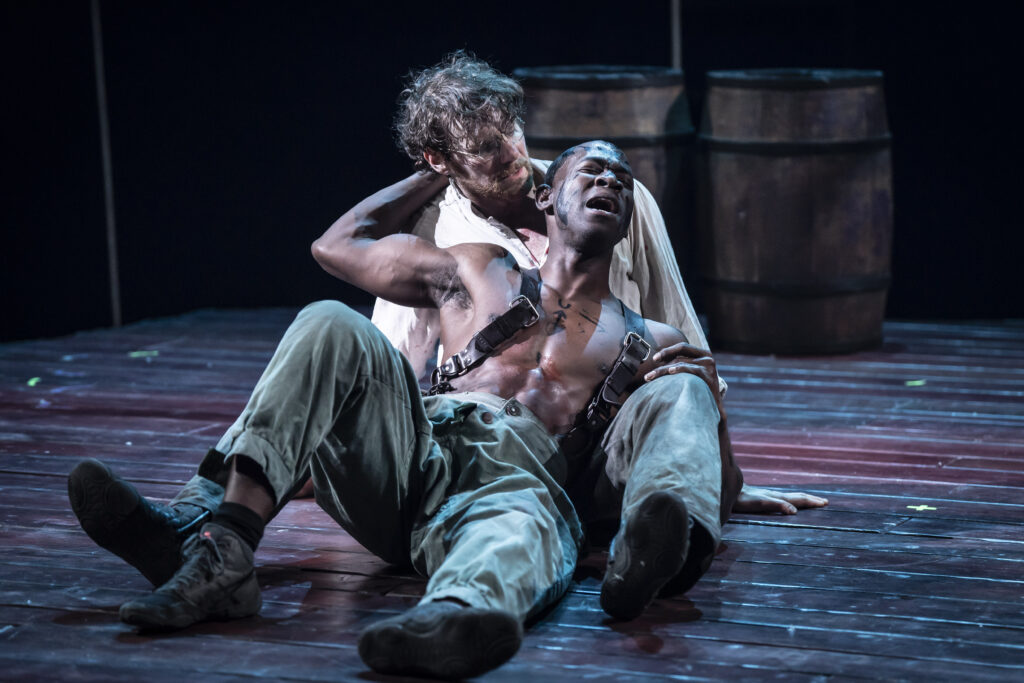
At a crowded inn, he is forced to share a room with a distinctively tattooed Polynesian harpooner, Queequeg, and that comical situation cements a friendship between the men. Muscular Kevin Aoussou is an imposing and regal Queequeg.
Walter Owen Briggs conveys Ishmael’s curious nature and sense of wonder, while looking at developments sensibly. He struggles with Ahab’s recklessness and the looming doom.
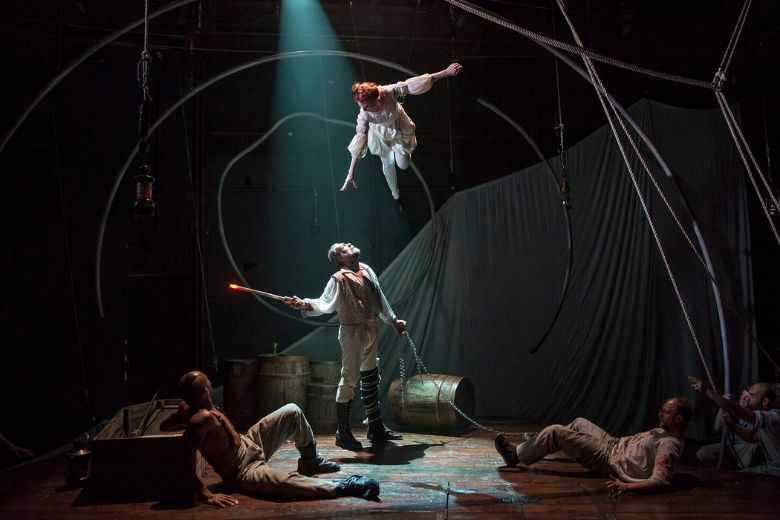
Ahab’s single-mindedness is his tragic flaw, and it will consume him. As the men resist, he pushes harder. He has tough altercations with brave first mate Starbuck, a fierce and agile Felipe Carrasco, that are intense and frightening.
The ensemble offers personal portraits to help identify them as crew members, and their instincts are finely tuned. In supporting roles are original castmates Micah Figueroa as Cabaco and Captain of New Bedford whaleship and Raymond Fox as Stubb as well as Captains Boomer and Gardiner, joining Julian Hester as Bulkington.
They indicate the physical aspects of their struggles with precise movements by acrobatic choreographer Sylvia Hernandez-Distasi, a founder and artistic director of The Actors Gymnasium in Chicago. She impresses with dazzling derring-do.
Three women portray the Fates – Maggie Kettering, Ayana Strutz and Bethany Thomas – and they swirl in and out, like spirits. They also present themselves as images of loved ones left behind, and townspeople in the villages.
The dexterity and physical stamina required of these performers is remarkable, and not unnoticed.
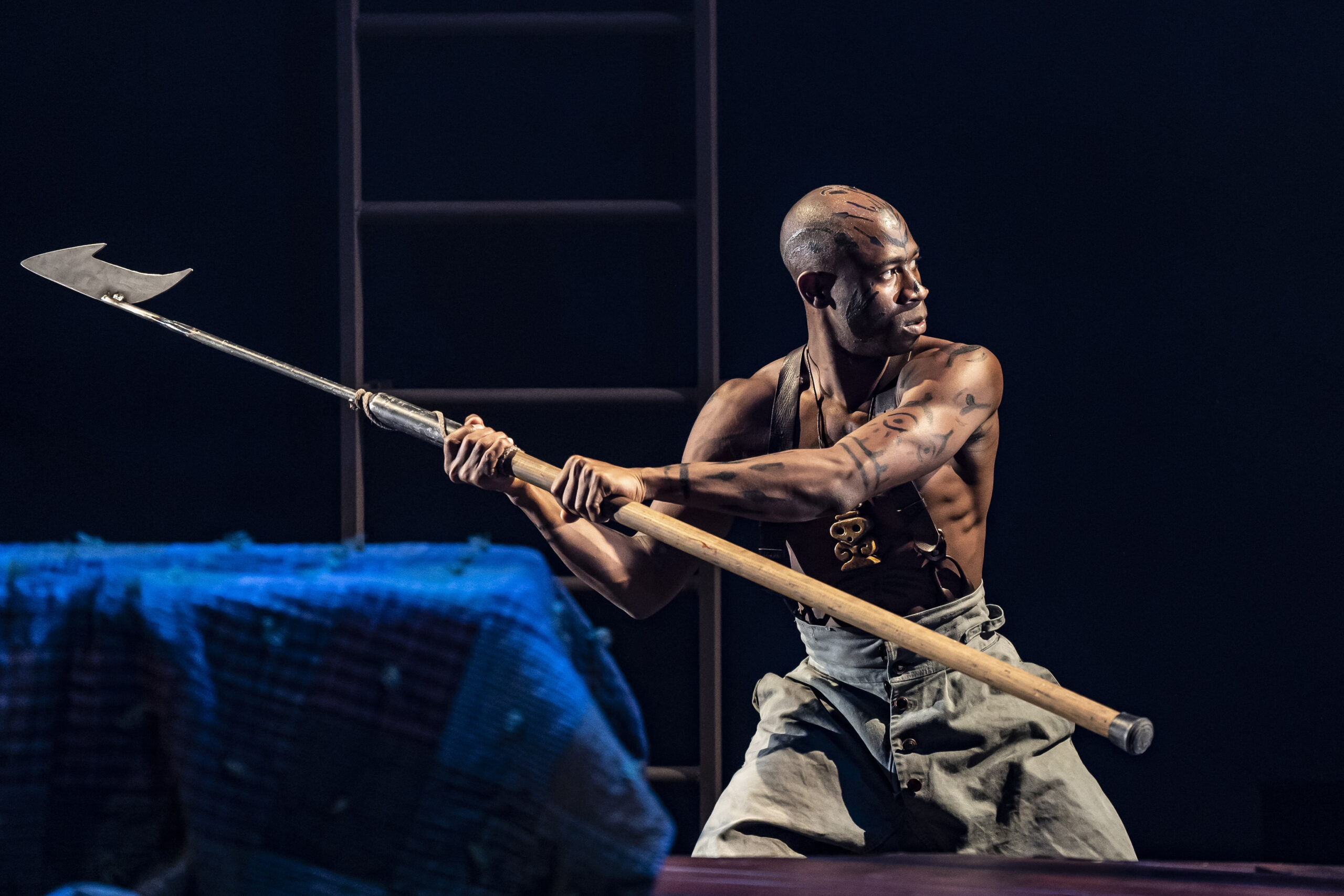
Costume designer Carolyn “Sully” Ratke and associate designer Stephanie Gluggish have fashioned ethereal garb for the mystical spirits, and an interesting wardrobe to create a human metaphor for Moby Dick and other whales. The other costumes are period-appropriate.
The squalls, the hunt, and the insurmountable typhoon are thrillingly staged as spectacles, diving deep into the life-or-death danger. The technology used is next-level and breathtaking, especially what Rigging Designer Isaac Schoepp has created.
(Kudos to the stagehands who participated in the curtain call, deserving a major standing ovation for their efforts), Bravo!
Lighting designer William C. Kirkham, and assistant designer Madeleine Reid, along with sound designer Rick Sims and associate sound designer Forrest Gregor, have recreated an atmospheric ocean tableau — thunderstorms, eerie nighttime shadows, blazing sun daylight, fire, the mysterious echoes of the high seas and the relentless waves.
They have captured dreamlike sequences as well as nightmares through aural and visual techniques, and Sims’ music compositions add texture.
A sequence of staggering beauty is when lanterns lit with whale oil illuminate the night sky, as they rise and seemingly float away, like fireflies.
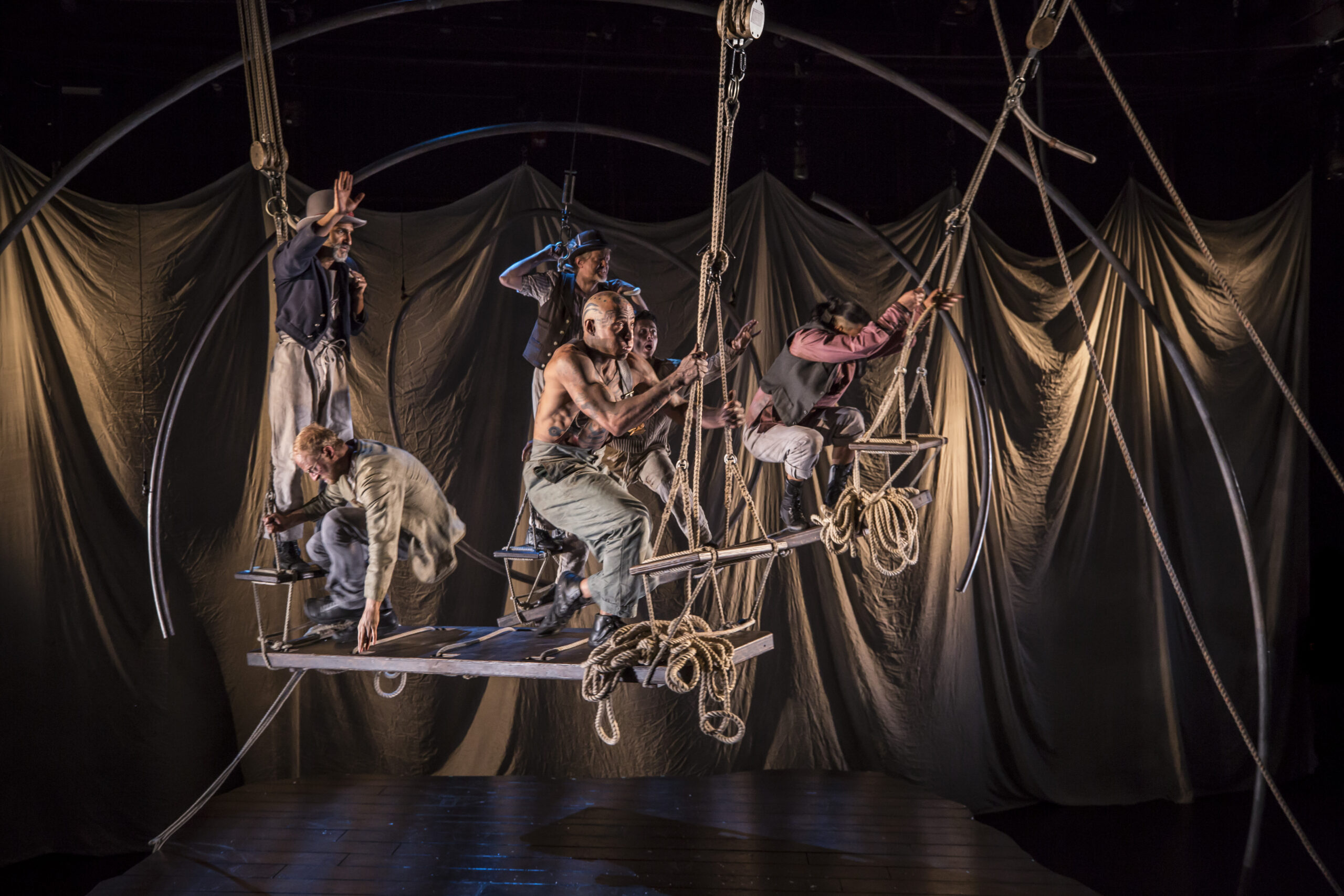
Moments of non-traditional storytelling are effective bridging the gap between the classic text and a new way to look at a staged presentation. However, the everlasting human condition commentary is not overshadowed by the production’s technical mastery.
Now, this show can be a challenge to navigate, particularly if you have never read “Moby Dick” or only made it through a few pages – it is not an easily digested drama. But stick with it, let the experience sweep you away, and you will be rewarded handsomely. (And you may want to read some Cliff Notes or Wikipedia information beforehand).
It’s exciting to watch something so significantly singular swing for the fences and achieve a greatness that people will be talking about for years.
The Repertory Theatre of St. Louis presents “Moby Dick,” adapted from the book by Herman Melville and directed by David Catlin of the Lookingglass Theatre Company through Feb. 25. Performances take place on the main stage of the Loretto-Hilton Center on the Webster University campus. For more information: www.repstl.org.
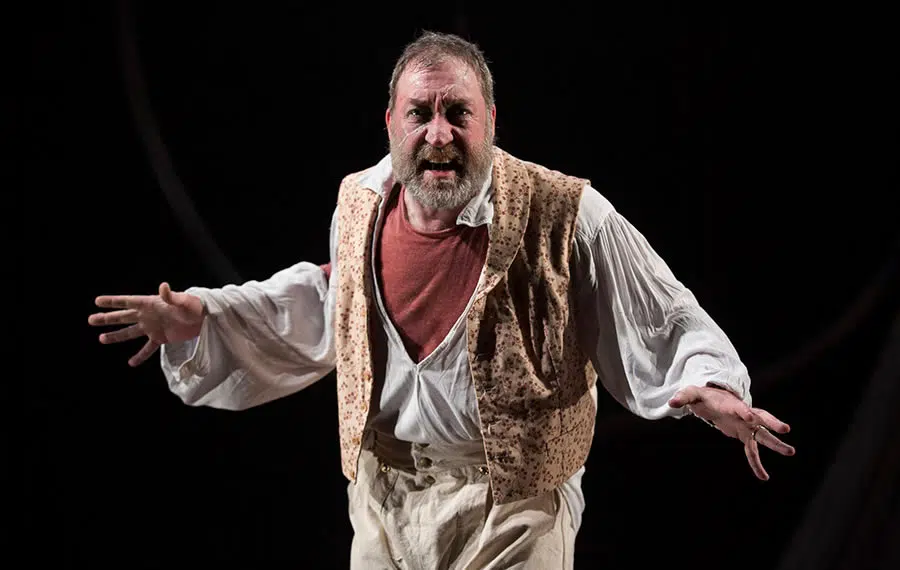

Lynn (Zipfel) Venhaus has had a continuous byline in St. Louis metro region publications since 1978. She writes features and news for Belleville News-Democrat and contributes to St. Louis magazine and other publications.
She is a Rotten Tomatoes-approved film critic, currently reviews films for Webster-Kirkwood Times and KTRS Radio, covers entertainment for PopLifeSTL.com and co-hosts podcast PopLifeSTL.com…Presents.
She is a member of Critics Choice Association, where she serves on the women’s and marketing committees; Alliance of Women Film Journalists; and on the board of the St. Louis Film Critics Association. She is a founding and board member of the St. Louis Theater Circle.
She is retired from teaching journalism/media as an adjunct college instructor.

